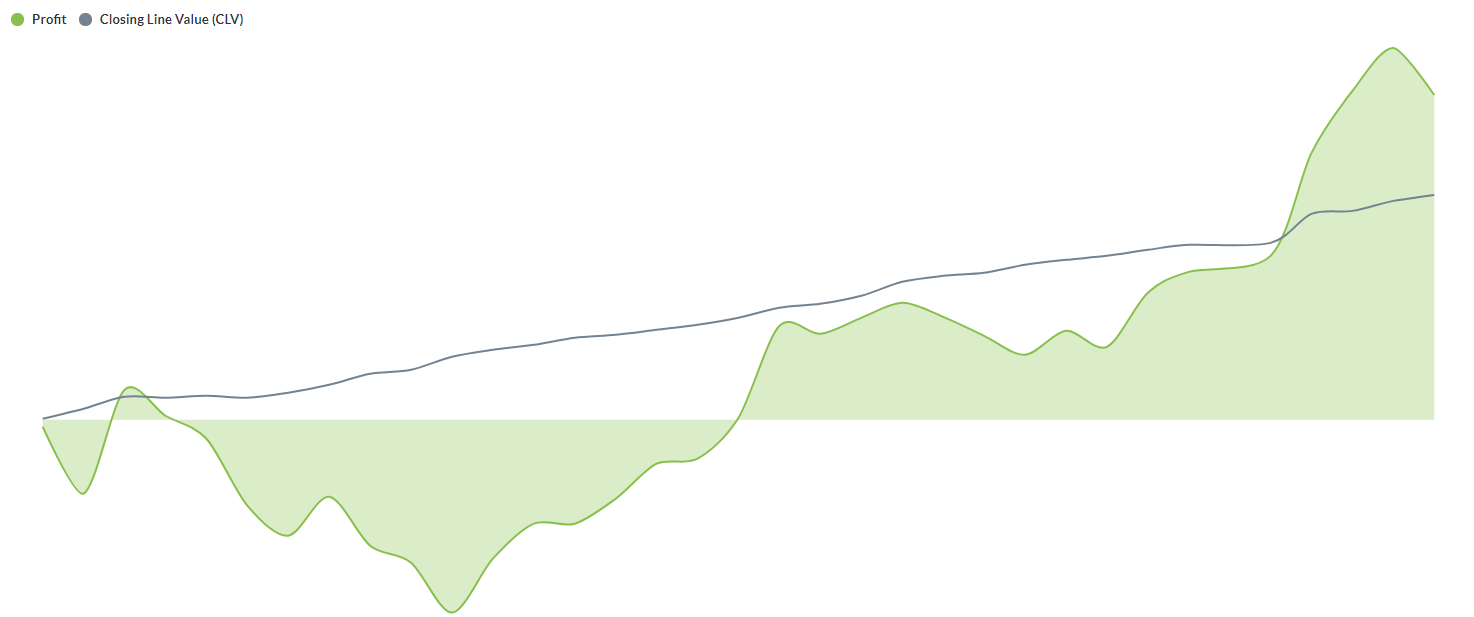Even if you are completely new to the world of profitable sports betting we are sure you have heard of expected value, this is a crucial thing to grasp to become a professional and successful sports bettor. Expected value is a common concept used to determine the average outcome of a bet if it were to be placed repeatedly over a long period.
It helps bettors assess whether a particular bet is likely to be profitable or not in the long run. The expected value can be positive (indicating a potential profit) or negative (indicating a potential loss). Understanding and calculating expected value is crucial for making informed and strategic decisions in sports betting.
Key Takeaways

Understanding Expected Values
To understand why value betting works, when betting with sports betting software, you need to grasp the basics first. Let’s talk about some key terminology surrounding the concept of expected value.
Value
Value is the percentage you see beside every value bet in RebelBetting. This is the value (also called edge, ROI or yield) of this particular odds right now compared to the “true odds”. Note that a value might decrease or increase closer to match start, as the bookmakers converge closer to the true probability. This is called the closing line.
Simulate your betting results
Discover how RebelBetting’s Profit Results Tool helps you visualize your betting success with detailed graphs and data analysis. This is a betting simulator tool that will help you understand how you can gain long-term profit from value betting. Track variance, expected value (EV), and profits across different datasets to optimize your betting strategy. Try the results simulator tool yourself here.
Closing Line Value (CLV)
Closing Line Value (CLV) is based on the sharp bookmaker’s odds just before match start. We call this the true odds. This is proven to be the best predictor of the outcome of a match, with accuracy uncannily close to 100%.
We use CLV as the predictor of your expected value (EV). Both these terms can be used, and they mean the same thing in RebelBetting.

If you regularly bet on odds higher than the closing line, you will be profitable. This is called beating the closing line. Value betting customers beat the closing line over 80% of the time.
Note that even though the sharp bookmakers make extremely accurate predictions, this does not mean you will win every bet. You often bet on value bets with true odds over 2.0 (lower than a 50% chance of winning), and often the underdog wins. This means your actual profit will at times differ a lot from the profit predicted by the CLV. This is called variance.
Variance
Variance measures the difference between your profit and the CLV. Or how far a set of numbers are spread out from their average value.
Variance means you will experience both downswings and amazing profits when value betting. Here we explain variance and the importance of thinking long-term.

Profit (green) and the closing line value (CLV, in grey). CLV is your expected value, over time.
Profit, ROI and Yield
Profit, ROI and Yield measure your actual results, which depend on the outcome of the matches. Read more about the difference between ROI and Yield. In short, yield is the profit percentage per bet, or per euro staked. ROI (return on investment), is how much your bankroll has increased since the start.
Flat profit
Flat profit (or unit profit) is used when comparing users, betting systems or tipsters against each other, without taking bankroll size and betting strategy into account. It’s the profit you would have achieved if you used a flat staking strategy (also called fixed staking). This means betting one “unit” (1% of your bankroll) at each bet. A unit is different for every user, it can be €10 or €100 – since it’s a relative number you can easily compare the results.

Note that betting using the Kelly criterion (a proportional staking strategy) will improve your profits compared to flat staking.
To view your value betting profit and CLV, they are shown at the top of the BetTracker, and also in your detailed reports.

Downswings are unavoidable, but temporary
Downswings can feel disheartening and unfair. But it’s something you will have to handle, because they are unavoidable. But if you don’t give up, you will also overcome them all.
So, how do you handle the psychological mind game of variance when betting? This video explains the risk strategy and teaches you how to cope with the rocky ride of variance. Do not underestimate the importance of long-term thinking to make a sustainable value betting profit.
Handle downswings
It’s easy to get stuck focusing on the downswings. This is because we all suffer from loss aversion – the pain of losing is psychologically about twice as powerful as the pleasure of gaining.
If you toss a coin 1500 times, there is a 52% chance you will get a streak of 10 heads in a row. This means if you place 1500 bets with an average true odds of 2.0 you have to expect 10 losses in a row. Or 10 wins. See this calculator.
But remember, this is with a 50/50 chance. With value betting you are always tossing a coin that is weighted in your favor, so your wins will outweigh your losses by around 4.5% per bet and euro staked.
You will overcome all downswings
If you’re having a downswing, there’s no need to panic. Your results will over time get closer to the expected value. This is because of two statistical tendencies: the law of large numbers and regression to the mean.
Coin toss example
The probability of a coin to land on Heads is 50%. But assume you get the odds of 2.10 on Heads and bet €10.
- If you win you profit €11
- If you lose you lose €10
To calculate the expected value of the bet you can use this formula:
(profit per bet * probability of winning in decimals) – (loss per bet * probability of losing in decimals).
In this case: (€11 * 0.5) – (€10 * 0.5) = €0.5
Therefore you would expect to make an average profit of €0.5 (or 5%) for each €10 bet because the odds offered are better than the implied odds of the coin toss.
However, after only one toss you would have either lost €10 or earned €11, not won €0.5. So if you only place 1 bet, the variance will be huge.
Variance will be higher in the beginning
Variance is particularly high when the sample size is small, for instance at the start of your value betting career:
Imagine if we place value bets with 4% value, at odds 2.00 with 1% of our stake. If the first bet loses your ROI is -1% but your yield is a scary sounding -100% (because your first and total stake was lost). If you then place two more bets which win, your ROI is just +1% but your yield is a fantastic +33%. This high variance will continue for some time, usually for hundreds of bets, especially if you have a streak of bad or good luck.
Streaks are more common than you think
After placing 1000 bets at 5% value (with win probability 53%), there is still a 25% risk that you will get 10 losses in a row!
This might make a scary-looking downswing. As bad as that sounds, the upside more than makes up for it. The chance of getting 10 wins in a row with that edge is much more likely; 56% over 1000 bets!

The more bets you place, the variance will have far less effect and your results will over time move closer and align with your expected value. Note that we’re not talking about a few hundred bets, it may require a couple of thousand bets. Read more about statistical significance in sports betting.
The importance of thinking long-term
It’s important to see value betting as a long-term way to profit. The number of bets, as well as using a staking and max bet strategy, play an important role in reducing variance. Here are some tips on how to reduce variance when value betting.
Summary
In the world of sports betting, understanding expected value (EV), closing line value (CLV), and variance is essential for long-term profitability. Expected value calculates the average outcome of repeated bets, guiding bettors to identify profitable opportunities. CLV measures the accuracy of predictions against the closing odds, crucial for assessing betting value.

Meanwhile, variance acknowledges the inevitable ups and downs in betting results, emphasizing the importance of a long-term perspective and disciplined strategy. By mastering these concepts, bettors can navigate uncertainties and optimize their chances of sustainable success in sports betting

Author: Simon Renström, RebelBetting Founder
Simon is the chief architect behind the sure betting and value betting products. A veteran software developer and entrepreneur that founded RebelBetting in 2007.





